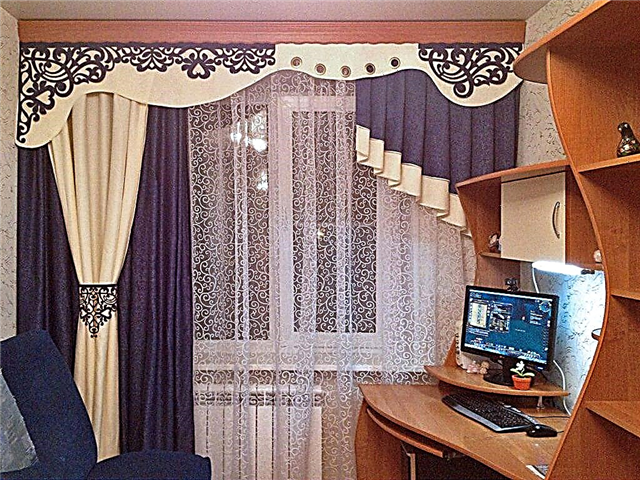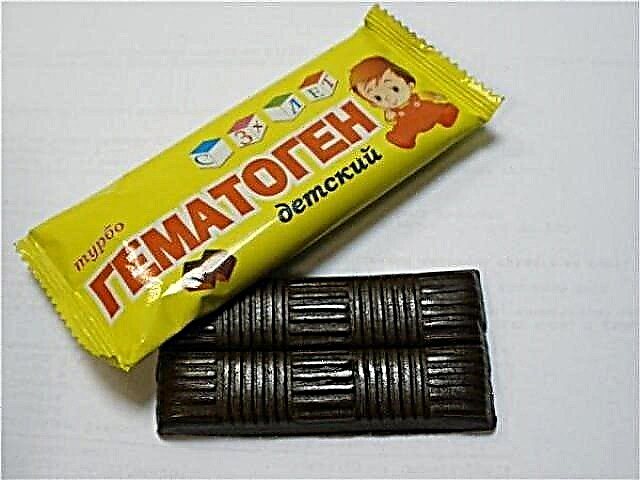
The range of goods for children's creativity is constantly updated. One of the most popular new products that appeared on our market in 2014 is kinetic sand. His mobility and plasticity have already been appreciated by many mothers and babies, using such interesting material in their games and developmental activities.

Appointment
The sand, which is called kinetic, was developed in Sweden for use with children. It can be used to:
- Training - Teach toddlers letters, counting, shapes, colors, numbers and more.
- Entertainment - come up with different games with sand.
- Treatments - soothe the baby with hyperactivity, as well as develop fine motor skills to stimulate speech development.
Benefit
- You can play with such sand at home any time of the year and in any weather.
- The material is clean and safe, which cannot always be said about sand in a backyard sandbox.
- Kinetic games are great for developing fine motor skills.
- Classes with such sand soothe the child and teach them to concentrate.
- By playing with kinetic sand, the child relaxes, relieves stress, expresses himself and emotionally rests.
- Thanks to classes with this material, babies develop tactile sensitivity and imagination.
The process of playing with kinetic sand is presented in the following video.
Pros compared to regular sand
- It does not dry out, so it feels like wet sand on the shore of a reservoir. It does not need to be wetted for sculpting, and if you leave it unpacked, it will not dry out.
- It does not develop pathogenic bacteria.
- Does not stick to baby's hands (if they are not wet), as well as to glass, plastic and metal.
- Its plasticity is much higher than that of simple sand, so it is very easy to sculpt from kinetics. This material is both dense, porous and fluid. If you press on a kinetic sand figurine, it will not crumble, but will creep away.
- When kinetic sand is poured, its grains of sand move more slowly due to the formation of polymer bonds between them.
- It is easy to form any shapes from it. When compressed, its volume greatly decreases, and the resulting shape does not collapse for a long time.
- It does not disintegrate with the formation of individual grains of sand, but remains in the form of one mass. It is easy to pick up by hand and will not leave any marks on the surface.
- It does not deteriorate from the influence of water, so if it gets dirty, it can be washed without fear. If it is wetted and then dried, the kinetic sand will not lose its properties.

Minuses
- Immediately after opening the package, there is a not very pleasant smell (vinegar or glue-like), but over time it evaporates.
- Since it is not free-flowing, it will not work with it to play the mill and other games in which the sand is sieved.
- If you make a large figure out of kinetics, it will not keep its shape well and will soon settle and spread.
- It sticks to silicone molds, so it is not recommended to sculpt with them from this material.
- If stepped on, it will firmly stick to your shoes.
- Due to the rather high density in a kilogram bag of this material, there is not very much mixture.
Can it be harmful?
The kinetic type of sand is a harmless and safe material. It is non-toxic and hypoallergenic. Even if the crumb accidentally swallows it a little, it will not pose a danger to its health. The sand will not dissolve in the child's digestive system, but will be removed from it naturally.
Composition
Most of the kinetics volume is represented by ordinary sand (quartz) and only 2% of the composition is a safe synthetic additive based on silicone. It is she who determines all the properties of this material and distinguishes it from simple sand and analogues.

At what age can you give?
According to the manufacturer's recommendation, you should play with this material from the age of 3. Such restrictions are due to the fact that children under this age often taste it. However, babies get to know ordinary sand as soon as they start walking. At the same time, rarely does anyone not try bulk material from the sandbox.
Since the kinetic version is much cleaner than the street version, games with such sand under the supervision of adults can be carried out from one year of age.
Types and what additionally can be included in the composition?
Signature colorless Swedish kinetic sand from Waba Fun Sold in packs of 1 and 5 kg (they contain two 2.5 kg bags, which are sold separately in many stores without breaking the original packaging). Not so long ago, the company began producing colored sand, so you can buy 2.5 kg packages of blue, green, purple, red, yellow or pink sand.

The premium sets from Waba Fun also include molds, presses and an inflatable sandbox.
The "Optima" series of this manufacturer is represented by sets with sand, molds, molds-presses, stamps and a container that serves as a sandbox.
For those interested in unusual colored sand, Waba Fun's Kinetic Sand offers kinetics in emerald, amethyst, gold, onyx, silver, ruby and sapphire. It is presented in packs of 454 g and features the addition of shimmery particles. The brand also offers 680g packs of blue, pink, green and purple sand, and its Build series includes sand in two different colors.

If you are interested in thematic sets, at the Kinetic Sand trademark you will see the sets "Ice Cream Cafe", "Sea Kingdom", "Avtopark", "Stroyka" and others. They also include special molds.
Check out the kinetic sand games - it's really fun and exciting!
How much sand is needed for a full game?
The required volume should be selected taking into account the age of the baby. The smaller the child, the shorter his games with such material will be, and the less volume he will have enough. For example, a child at the age of 1.5 years will be carried away by a kilogram package of kinetics for a long time, and a three-year-old needs more sand, so a package of at least 2.5 kg or a set of several colors is preferable.


A 5 kg package is enough for several children to play. Also, such a bulky packaging is needed for a child who is fond of modeling and can easily build many large and beautiful structures.
How to play?
With kinetic sand, you can come up with many interesting games:
- Form different figures using a variety of molds and improvised items.
- Using the cookie cutters, play with your child as a pastry baker. Have the kid cut out of the "dough" or make a "cake" and cut it into portions
- Taking a toy dump truck to play, play construction.
- Hide tiny toys in the sand and invite your child to find them.
- Cut out figures with sorter molds and name their shape, count and remember them.
- Make big and small figures, and then compare their sizes.
- Learn to use a knife when cutting sausages.
- With a sharp stick, draw numbers or letters, as well as sculpt them from kinetics.
- Leave stamps with different items.
- Choose buttons or small balls from sand.

Can I mix colors
Games with sets of colored kinetic sand are especially interesting, but it should be borne in mind that sand of different colors is mixed without the possibility of its subsequent separation. If you mix many shades, the result is a dark mass.

A little about security
Although, as we have already noted, the kinetic variant is harmless and non-toxic, it should still not be allowed to get into the child's mouth and eyes, as well as into the ears or nose.
All games with such material should be supervised.
Storage and operation features
- For storage, you can use a sandbox or a plastic container so that dust and other contaminants do not get into the material.
- It is advised to store it at room temperature in conditions of low humidity (40-60%).
- If it accidentally gets wet, no special heating is required to dry it. If the room is humid, it can become sticky and runny. This is corrected by thin layer drying.
- When stored in a room with low humidity, the kinetics will lose some elasticity. To return it, the material should be sprinkled with water and crumpled briefly in your hands.
- Remember that it absorbs odors with ease, so it is advisable to wash your hands thoroughly before using this material.
- Play on a clean surface and girls should tie up their hair before class.
- Also, choose clothes that the kinetic won't stick to. Smooth, tight sweatpants, jeans, or leggings are good options.
- Try to collect all the sand after class, otherwise its volume will greatly decrease over time.

Is it easy to clean up after playing?
Collecting kinetic sand at the end of the game is easy. It can be easily assembled by hand, as well as a sand lump. The grains of sand will stick to the main lump as easily as they would to a magnet. If desired, you can also use a vacuum cleaner for cleaning.
If you're wondering what happens to kinetic sand if it is frozen or baked in the oven, watch the next video.
Where could I buy?
Since kinetic sand appeared on our market not so long ago, it will not always be possible to purchase it in a regular children's store. In some cities, they have not even heard of such material, so for original and high-quality kinetics, you should contact online stores offering a Swedish product from Waba Fun and Delta Of Sweden.
Reviews
Moms almost always speak positively about him. They note that children are occupied with playing with this material for a long time, such sand does not stain their hands and the surface, and is also very easy to clean.
Nevertheless, there are children who got tired of it pretty quickly, so parents advise to buy a small package for a start or go to visit a child who already has a sandbox with a kinetic.
You can also hide the sand for a while and offer to play with it after a while, then the child will be interested again. Also periodically stir up interest by buying new molds and accessories.

Analogs
Kinetic sand is often compared to similar modeling materials called living sand and space sand.
Although they all belong to the types of sand, there are quite a few differences between them. For example, space sand has a higher density, so figures made from such material are more durable, and their contours are clearer. It costs a little less than kinetics.
Unlike basic kinetic sand, which is dark brown in color, living sand is white. It is made not of quartz sand, but of shell rock. If you put it in water, it will dissolve, and the kinetic one will not change under the influence of water. Moreover, it is produced in Asia and is more expensive.


Can you do it yourself?
You can try to create an analogue yourself from:
- Well sifted pure quartz sand.
- Potato or corn starch.
- Water.
- Food coloring.
For information on how to make kinetic sand at home, read another article and watch the video. Of course, it will not differ from the purchased one for the better, but children can play with it too.



